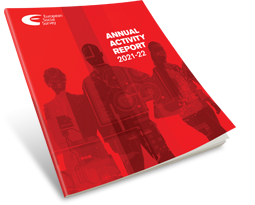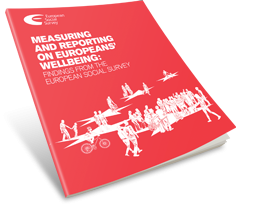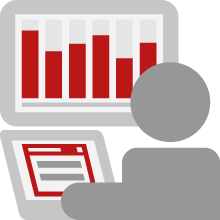Learning
Resources available to researchers include our events mailing list and user statistics
Related Studies
In this section you will find information about data relevant to the European Social Survey (ESS) but not part of official data and documentation.
These studies have either directly fielded ESS questions, are developed in cooperation with the ESS, or have collected data with direct relevance to the ESS.
All links are with countries outside of the European Research Area.
Shared user resources
Shared user resources give access to resources or tools shared by the ESS user community. The resources are published here under the criteria that they have been included in peer-reviewed and published articles/publications. Their inclusion does not represent endorsement by ESS ERIC.
Schwartz's Cultural Value Orientations by Hermann Dülmer, Shalom Schwartz, Jan Cieciuch, Eldad Davidov and Peter Schmidt
Based on the European Social Survey, the authors estimated for the first time a multilevel CFA for Schwartz’s model of cultural value orientations and compared the estimated latent factor scores for the cultural values with additive indexes.
Two datasets (SPSS and Stata) that are available for download include the factor scores and additive indexes of the cultural value orientations (ESS rounds 2-7). This data has been made available by the authors for researchers who are interested in using the macro-indicators for their own research.
An article was recently published in Survey Research Methods:
The aim of this study is to compare results of measuring the Schwartz (2004) cultural value orientations using multilevel confirmatory factor analysis (ML CFA) vs. the unweighted aggregated means (simple means) used in previous research. We conduct this comparison with data from the 21-item short version of the Por-trait Values Questionnaire in 6 rounds of the European Social Survey (ESS). An advantage of estimating factor scores via ML CFA vs. simple means is that ML CFA weights the impact of the factors on their indicators empirically. It also permits simultaneously assessing Schwartz’ 10 individual level and 7 cultural level values by decomposing the total variances of the 21 items into a within part (individual values) and a between part (cultural values), while controlling for random measurement errors. High intercorrelations between related values in ML CFA required unifying two pairs of cultural values. Comparing correlations with theoretically relevant macro indicators of the factor scores and of the simple means of the cultural values indicated somewhat higher external validity for the factor scores. Taken together, the findings suggest that the derived factor scores provide suitable macro indicators of Schwartz’ cultural value orientations for future studies using the ESS data.
Social class schema - script to construct an indicator of social class in the ESS by Daniel Oesch
Codes in Stata, R and SPSS with descriptions
Over the last 30 years, trends such as service sector growth, welfare state expansion and rising female participation rates have promoted increasing heterogeneity within the occupational system. Accordingly, this article argues that the class map has to be redrawn in order to grasp these changes in the employment structure. For that purpose, it develops the bases of a new class schema that partly shifts its focus from hierarchical divisions to horizontal cleavages. The middle class is not conceptualized as a unitary grouping and the manual/non-manual divide is not used as a decisive class boundary. Instead, emphasis is put on differences in marketable skills and the work logic.
The schema is expected to more accurately reflect the class location of unskilled service employees and to make visible the political divide within the salaried middle class. This expectation is empirically examined with survey data from Britain, Germany, Sweden and Switzerland. Findings for earnings and promotion prospects indicate that the schema successfully captures the hierarchical dimension in the class structure. Moreover, results for party support and union membership suggest that the schema grasps a salient horizontal cleavage between managers and sociocultural professionals.
Keywords: class analysis; class voting; electoral sociology; employment structure; socioeconomic inequalities
essurvey R package by Jorge Cimentada
The essurvey package is designed to download ESS data as easily as possible into the R statistical software. It provides helper functions to download rounds for all countries or for a selected country only and to show which rounds/countries are available on the ESS website. Documentation and examples are available on the package's website.
Please note that this resource is currently unavailable, due to a change in data publishing architecture.
ESS Flagship Reports

ESS ERIC Prospectus
If you would like to receive printed copies of the Prospectus in any of the available languages, please email Stefan Swift.
Select a language to download the PDF

ESS Annual Activity Report
The activities of the ESS ERIC are detailed in its annual activity reports.
Select a year to download the PDF

Europeans' Wellbeing
Measuring and reporting on Europeans' Wellbeing: Findings from the European Social Survey
Select a language to download the PDF






